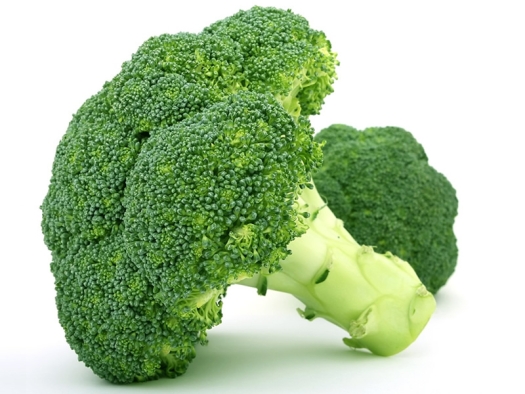Broccoli.jpg

Photo by Rob Owen-Wahl / Pixabay License
While I’m working on my new book on longevity, I’ve been diving deep into the research on what I can do to keep my internal age young as my chronological age gets older. One of the areas I’ve been exploring more, and even experimenting with myself, is hormesis.
Hormesis is the idea that stress in the right dose activates our longevity switches. Basically, what doesn’t kill you makes you stronger. Some examples of hormetic stressors include sauna, ice baths, and phytochemicals – the chemicals produced by plants that put just enough stress on our bodies to boost antioxidant production and lower oxidative stress. Any antioxidants that are left over from this response tackle inflammation in other areas, like our brain and arteries.
Over 25,000 different phytochemicals have been discovered so far. Today, however, I want to talk about one that has gotten a lot of buzz over the past few years for its potent anti-inflammatory, detoxification, and disease-fighting properties, and that’s sulforaphane.
How Does Sulforaphane Work in the Body?
Sulforaphane is a sulfur-containing phytochemical found in cruciferous vegetables like broccoli. Sulforaphane is a potent bioactive molecule that binds to Nuclear factor-erythroid factor 2-related factor 2 (Nrf2), a transcription factor that tells our genes to make antioxidants in response to a stressor. But we can’t get sulforaphane from broccoli directly; its precursor, glucoraphanin, has to be metabolized first. For glucoraphanin to be broken down into sulforaphane, it needs help from myrosinase, an enzyme that’s activated by chewing and chopping cruciferous vegetables. Certain gut bacteria also produce myrosinase, so glucoraphanin can be metabolized into sulforaphane in the gut as well.
What’s So Special about Sulforaphane?
There are thousands of phytochemicals that upregulate our antioxidant and longevity genes – so what makes sulforaphane so special? Sulforaphane upregulates glutathione. Often referred to as “the mother of all antioxidants,” glutathione lives up to its title. Glutathione is the most important molecule you need to stay healthy and prevent disease. It helps protect our DNA and cells from free radicals, oxidative stress, infections, and cancer.
Producing and maintaining a high level of glutathione is critical for promoting optimal health and longevity. The good news is we can produce glutathione internally, and sulforaphane is one of the ways we can upregulate its production.
The Protective Effects of Sulforaphane
Sulforaphane is neuroprotective. It crosses the blood-brain barrier and upregulates glutathione production, which consequently lowers neuroinflammation. Studies support sulforaphane as an effective treatment for improving clinical outcomes in neurodegenerative diseases like Parkinson’s, Alzheimer’s, and multiple sclerosis. There are also studies that support increased glutathione levels in the brain from sulforaphane administration helping to rebalance the brain chemistry of mood disorders like schizophrenia.
Glucoraphanin belongs to the family of phytochemicals known as glucosinolates, which are well known for their anti-cancer effects. The sulforaphane that’s derived from glucosinolates activates apoptosis, reduces cancer cell proliferation, and stimulates detoxification pathways that help eliminate carcinogenic compounds from the body.
Where Can You Get Sulforaphane?
To get sulforaphane from food, you’re going to have to eat a lot – and I mean A LOT – of cruciferous vegetables. Besides broccoli, cruciferous vegetables have pretty low levels of glucosinolates. Even broccoli doesn’t contain enough to significantly increase glutathione levels. Broccoli sprouts are the most concentrated source of sulforaphane; just two ounces contain as much glucoraphanin as a quarter pound of broccoli!
How to Maximize Your Sulforaphane Intake:
- Grow your own broccoli sprouts. Sprouting seeds makes them easier to digest and also increases their nutritional value, which is why broccoli sprouts are the best source of glucoraphanin (and remember, more glucoraphanin means more sulforaphane). To grow your own broccoli sprouts, all you need is broccoli seeds and a stainless steel sprouting tray, and you can sprout them yourself in just a few days. Just be sure to rinse them regularly and refrigerate them after they've finished sprouting to avoid mold spoilage.
- Sprinkle broccoli sprouts on top of your salad. Broccoli sprouts have a bitter, almost spicy taste. Some people enjoy it, while it might be a challenge for others to eat. Use broccoli sprouts to take your salad’s phytochemical richness to the next level. You can also make a tasty dressing to help tone down the bitterness of the sprouts. This brunch salad with tahini dressing recipe goes great with a couple of pinches of broccoli sprouts on top.
- Eat broccoli every day. Broccoli may not contain as many glucosinolates as broccoli sprouts, but there’s plenty of research that supports daily consumption of broccoli as having protective benefits against ovarian, prostate, and colorectal cancer for its soluble fiber and other phytochemicals, such as indole-3-carbinol. Aim for one serving (about 100g or ½ cup) daily. If you can’t do that, a few servings of broccoli a week is enough to make a positive difference.
- How to prepare and eat broccoli for maximum benefits. The way you prepare your broccoli matters because it impacts how much sulforaphane you’ll get. Glucoraphanin is water-soluble, which means it leaches out while cooking. Additionally, myrosinase is heat sensitive and becomes inactive at high temperatures, making sulforaphane even less bioavailable.
- You can get around this by eating your broccoli raw instead of cooked.
- And if you’re going to cook your broccoli, steam it or add it to soup or stew and drink the liquid afterward.
- A team of Chinese researchers found that waiting 90 minutes after chopping raw broccoli before cooking it allows more myrosinase activity and sulforaphane production than cooking broccoli immediately after chopping.
- Another hack is you can eat your broccoli with a side of brown mustard (a natural source of myrosinase) that can make up for the myrosinase that’s inactivated by cooking.
- Take a bioavailable supplement. Broccoli seeds are the most concentrated source of glucoraphanin, but it's hard to know exactly how much you’re getting because seeds contain various concentrations. If you’re looking to maximize sulforaphane’s antioxidant potential and therapeutic effects, you’re better off taking a bioavailable glucoraphanin supplement.
Whether you are trying to age backward like me, or looking for additional anti-inflammatory, antioxidant support on your health journey, finding ways to incorporate more broccoli and broccoli sprouts into your diet for their sulforaphane superpowers can be an extremely beneficial practice. Glutathione is the mother of all antioxidants, and sulforaphane is our ticket for tapping into our endogenous supply and keeping it turned on.


